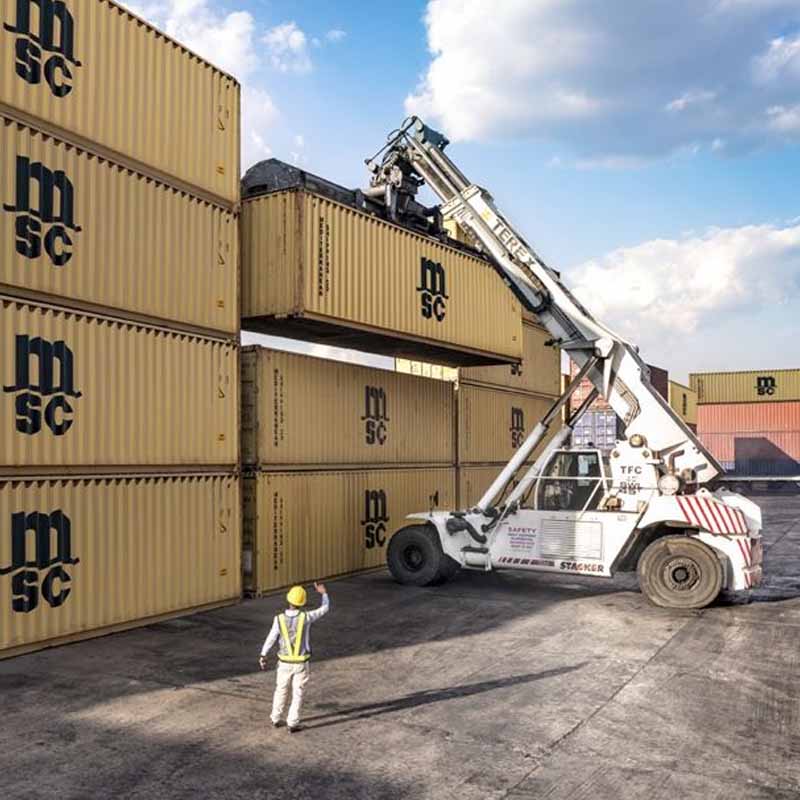International trade relies heavily on efficient customs clearance processes to ensure the smooth flow of goods across borders. Customs clearance transport plays a pivotal role in facilitating trade by managing the documentation, inspections, and compliance requirements necessary for goods to enter or exit a country. In this article, we will explore the complexities of International Customs Clearance Transport, its importance in global trade, and the key considerations for businesses navigating this critical aspect of logistics.

Understanding International Customs Clearance Transport:
International customs clearance transport involves the movement of goods across international borders while complying with the customs regulations and procedures of the importing and exporting countries. It encompasses a range of activities, including:
1.Documentation Preparation: Businesses must prepare accurate and complete documentation, such as commercial invoices, packing lists, and certificates of origin, to facilitate customs clearance.
2.Customs Declarations: Customs declarations provide detailed information about the goods being imported or exported, including their description, value, quantity, and origin. These declarations are submitted to customs authorities for inspection and clearance.
3.Inspections and Compliance: Customs authorities may conduct inspections to verify the accuracy of declarations, ensure compliance with import/export regulations, and detect prohibited or restricted goods.
4.Duties and Taxes: Import duties, taxes, and fees may be imposed on imported goods based on their classification, value, and country of origin. Businesses must calculate and pay these duties to facilitate customs clearance.
Importance of International Customs Clearance Transport:
Efficient customs clearance transport is essential for several reasons:
1.Facilitating Trade: Customs clearance transport streamlines the movement of goods across borders, reducing delays and bottlenecks that can impede international trade.
2.Compliance: Compliance with customs regulations is critical to avoid penalties, fines, and delays in the clearance process. Proper documentation and adherence to import/export requirements are essential for compliance.
3.Cost Management: Efficient customs clearance transport helps businesses minimize costs associated with delays, storage, and penalties. Timely clearance reduces the need for additional warehousing and inventory holding costs.
4.Customer Satisfaction: Prompt customs clearance enhances customer satisfaction by ensuring timely delivery of goods and minimizing disruptions to supply chains.
Key Considerations for Businesses:
Businesses engaged in international trade must consider several factors when navigating customs clearance transport:
1.Regulatory Compliance: Stay informed about the customs regulations, import/export requirements, and documentation procedures of the countries involved in the trade transaction.
2.Risk Management: Identify and mitigate risks associated with customs clearance, such as delays, customs inspections, and regulatory changes, to minimize disruptions to supply chains.
3.Logistics Partner Selection: Choose reliable logistics partners with expertise in customs clearance transport and a global network of agents to ensure smooth and efficient clearance of goods.
4.Technology Adoption: Leverage technology solutions, such as electronic customs clearance systems and automated documentation platforms, to streamline customs processes and improve efficiency.
Conclusion:
International customs clearance transport is a critical component of global trade, enabling the seamless movement of goods across borders. By understanding the complexities of customs clearance processes, businesses can navigate international trade with confidence, ensuring compliance, minimizing risks, and optimizing supply chain efficiency. Effective management of customs clearance transport is essential for unlocking opportunities in the global marketplace and driving growth in today's interconnected world.